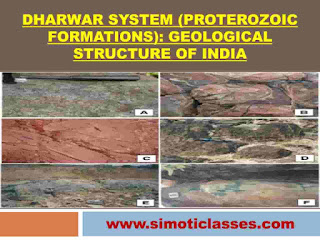The Coastal Plains
The Peninsular Plateau of India is flanked by narrow coastal plains of varied width from north to south, known as the West-Coastal Plains and the East-Coastal Plains. These coastal plains differ from each other. They were formed by the depositional action of the rivers and the erosional and depositional actions of the sea waves.
According to geologists, the origin of the western and eastern coasts of India may be attributed to the faulting and subsidence of the Arabian Sea and the Bay of Bengal towards the close of the Eocene Period. Considering, the alluvial deposits along these coasts are of very recent origin, ranging from Pliocene to recent times. These coastal plains have evidence of submergence and emergence.
The Indian coastal plains may be subdivided into the following three (3) divisions;
1. The Gujarat Coastal Plains:
- The Gujarat plain covers almost the entire state of Gujarat, except the district of Banaskantha and Sabarkantha.
- It is formed by the alluvial deposits of Sabarmati, Mahi, Luni, and numerous tiny parallel consequent streams.
- It contains the Gondwana rocks (Umia series), resting over the marine Jurassic rock and capped by Lower Cretaceous (Aptian) beds. The Deccan lava lies over the Umia series.
The eastern section of Gujarat Plain is a projected jet of the Sindhu-Ganga alluvial tract in Peninsular India. This projection is the outcome of extensive Pleistocene sedimentation. Present rivers have further advanced this deposition to the Gulf of Khambat.
Among the highlands, mention may be made of;
- Rajpipla Hills (Satpura)-famous for agate quarries
- Parnera Hills in Bulsar district
- Sahyadris in the southern side and
- Igneous complex of the Girnar Hills (Gorakhnath Peak, 1117 m)
- Mandav Hills in Kathiwad.
The Rann of Katch is an extensive tact of naked tidal mudflats transected by abandoned and live creeks. The Gulf of Katch separates the Rann of Katch from the Kathiawar Peninsula. The salt in the soil makes this low-lying marshy area almost barren and unproductive. The whitish vertebrae of salts appear as white bony structures of the dried creeks. Live creeks from the dendritic pattern of drainage and there has been accentuation in this pattern due to earthquakes. South of the Rann lies Katch, formerly an island, which is almost surrounded by the Rann except in the south-west.
2. The West Coastal Plains:
- It lies between the Sahyadris and the Arabian Sea. It is about 1400 km long and 10-80 km wide.
- It has an elevation up to 150 m above sea level, reaching more than 300 m at places.
- The western coastal plain is characterized mainly by sandy beaches, coastal sand-dunes, mud-flats, lagoons, alluvial tracts along rivers, estuary, laterite platforms, and residual hills.
- The Sahyadris (elevation 750-1225 m) runs parallel to the plain and present their steep face to the low lands with Thalghaat and Borghat (gaps) in the north and the Palghat (Palakkad gap) in the south of the Nilgiri.
- Southwards is the Karnataka coastal plain which is about 525 km long and 8-25 km wide. It is the narrowest part of the west coastal plain.
- The southern part is known as the Malabar coast is found in the valleys of Beypore, the Ponnani (draining through Palghat), the Periyar, and Pamba Achankovil rivers. The coast is characterized by sand dunes.
Along the coast, there are numerous shallow lagoons and backwaters- Kayaks and Teris. These lagoons are linked together to facilitate navigation through small boats. Here, Vembanad and Asthamudi are important lagoons of the Malabar coast. It is the homeland of aquatic life like crabs, frogs, mudskippers, birds like terns, kingfishers, cormorants, and otters and turtles live alongside the backwaters.
The backwaters are important tourist spots and are of importance for transportation, fishing, and even agriculture. The region has deposits of Monazite sands which are reddish-brown and rich in phosphate. Monazite is radioactive due to the presence of thorium.
3. The East Coastal Plains:
- The eastern coastal plain lies between the Eastern Ghats and the Bay of Bengal and stretches along the coasts of Odisha, Andhra Pradesh, and Tamil Nadu.
- These plains are formed by the alluvial fillings of the littoral zone comprising some of the largest deltas of the world.
- The east-coast plain consists mainly of recent and tertiary alluvial deposits. These are gentle, monotonous plains rinsing gently westward to the foot of the Eastern Ghats. The monotony of the topography is broken by the presence of numerous hills.
- This coastal plain has a straight shoreline with well-defined beaches of sand shingles. The most famous is Marina Beach (Chennai).
There are some of the important lagoons of India along the Eastern coast, of which, Chilka lake in the southwest of the Mahanadi delta is the biggest lake (area= 65 km X 8 km) in the country. The Kulleru lake lies between the deltas of Godavari and Krishna while the Pulicat lake lies further south on the border of Andhra Pradesh and Tamil Nadu.
































